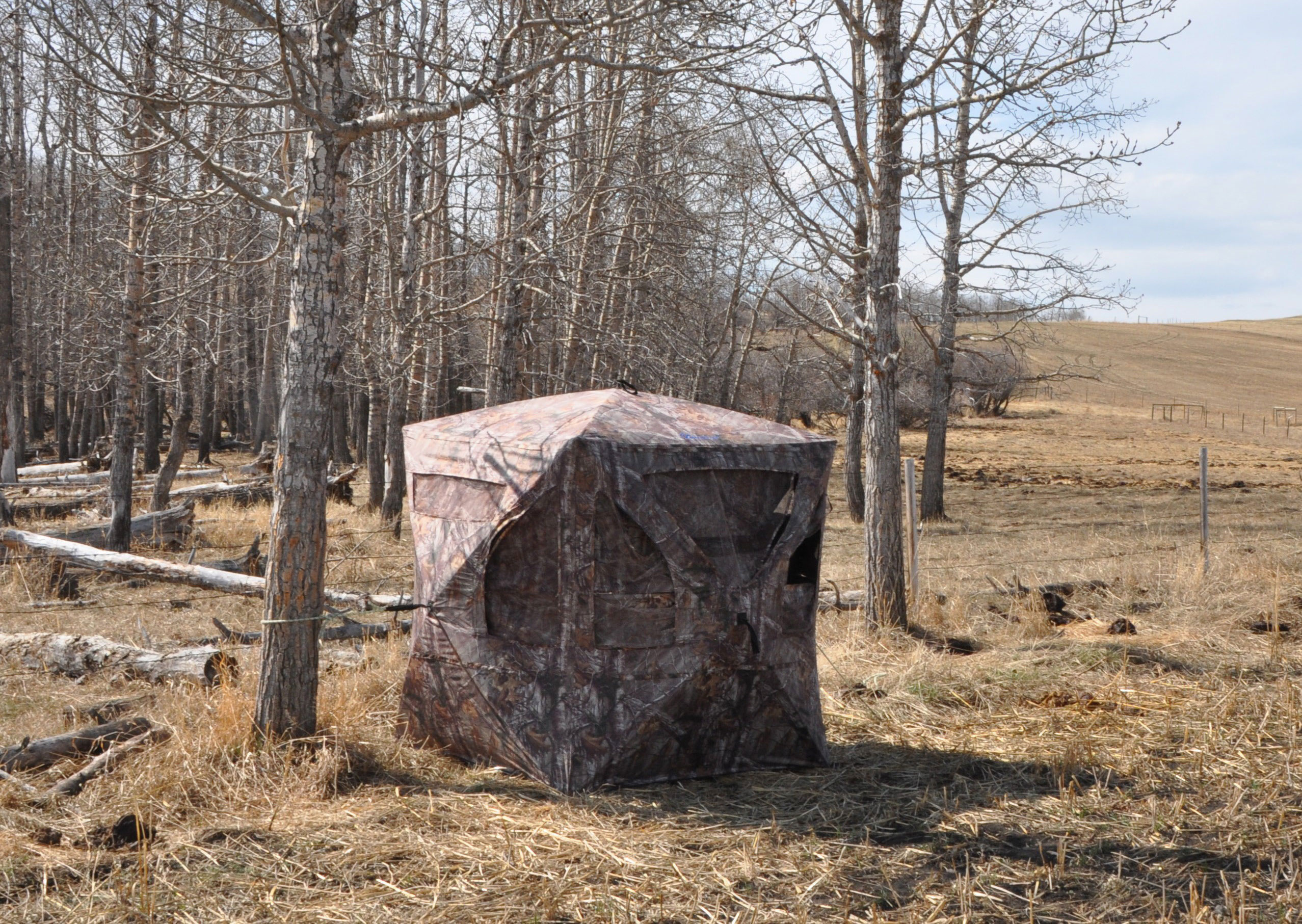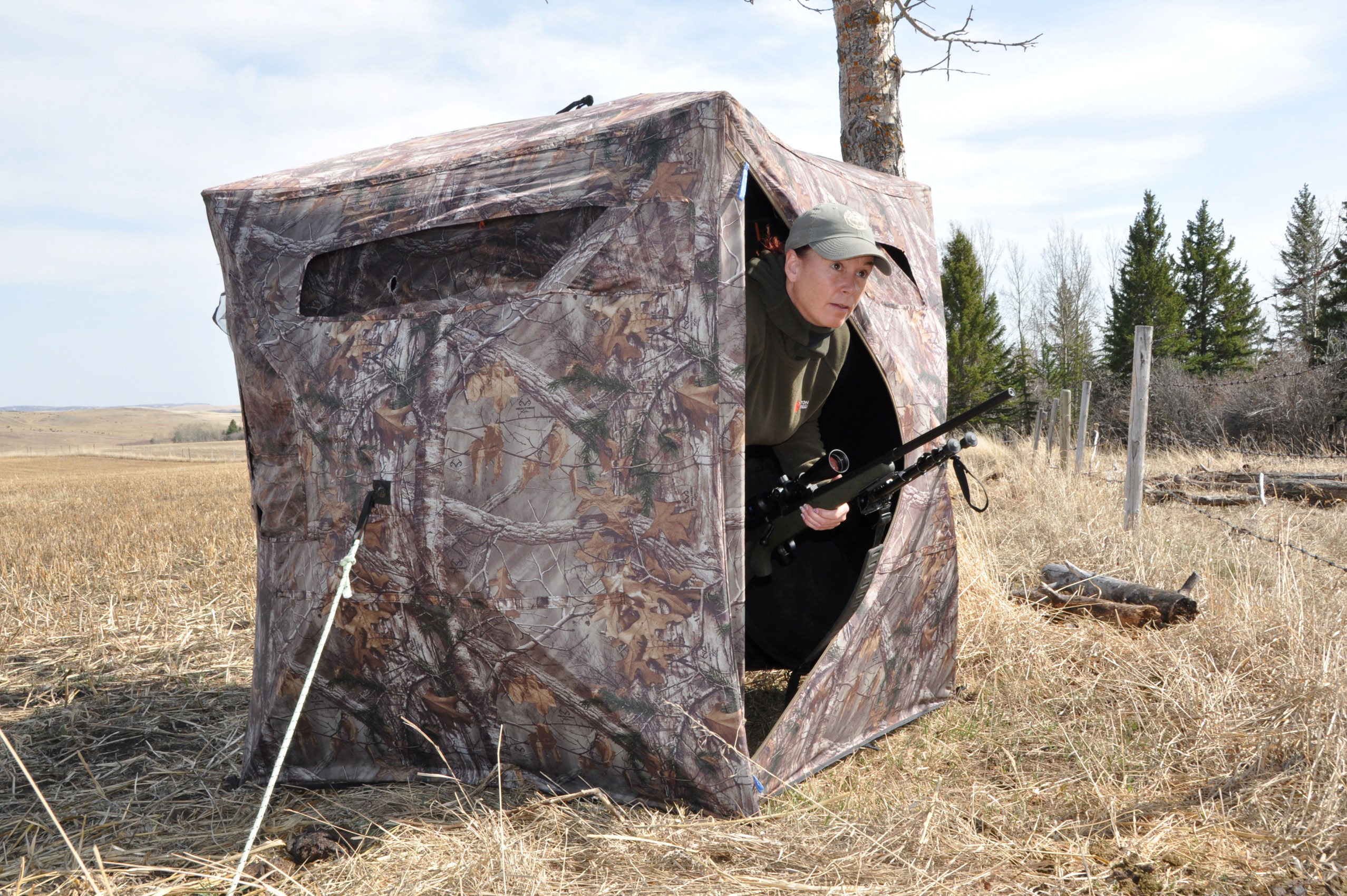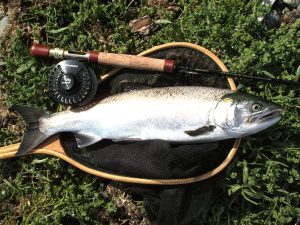We all have nemesis. Mine are mountain goats and cougars. Elk, on the other hand, are not. I’ve had my fair share of good luck hunting elk and while it’s not like I haven’t worked hard for them, lady luck sure has smiled upon me as well. And this season was to be no different while I was Elk Hunting. There’s a week overlap with archery deer and rifle elk hunting season in the zone we hunt, so it’s often a big dilemma of what to do that week. This year was easy, however. TJ had taken an elk on opening morning and that left the rest of the week for him to chase deer with the bow and it only made sense for me to pack the rifle…just in case. On the ranch we hunt, you typically only get one chance at elk and once the shooting starts, they typically vacate it quickly and may not return for the entire season. There is some great feed on the ranch but cover is sparse and elk have no real reason to hang around when the pressure is on. So, with this in mind, we did have greater hopes for the deer hunting than taking a second elk hunting, but as they say, luck is the meeting of opportunity and preparation, and I was prepared.

We aren’t long-range shooters by choice but that doesn’t mean we can’t shoot long range when no other options are available. On this particular ranch, as cover is sparse, one is often faced with long shots with no opportunity to close the gap. I took my last bull at just over 500 yards in the middle of a hayfield. When people on social media groups criticize long-range shooters for being nothing but lousy hunters., the truth is, hunt long enough and you’ll find yourself at all ranges from animals, with no way to close the distance. The quality of the hunter is only judged by the one that closes the distance as much as possible and has the knowledge to only take the shot when they have the skill and gear to do so. We practice long-range shooting throughout the year and have most of our rifles set up to shoot 500-600 yards. On this particular day, I chose to take along the 7mm Remington Magnum and was ready for shots from 10 to 600 yards if needed.
We had a ground blind set up on the edge of a harvested oat field, which was seeing some fairly heavy use by whitetails, the odd elk, black bear and even a sow grizzly with two cubs. There was considerable regrowth coming up and as the field had been baled rather than combined, there was enough standing oats in the corners and sloughs to really attract the bears. We’d seen the mama grizzly many times while sitting the field and had dozens of pictures of her and her cubs on the trail camera. They were regulars at one of the water troughs, where her cubs routinely climbed in on the hot days for a cooling bath. I’ve been known to grab the odd drink out of these cattle waters on really hot days but after seeing the trail cam pictures, I’m going to rethink that practice.

We settled into the blind around 4:00 in the afternoon and didn’t have to wait long until the first groups of whitetails began to show up. There were no real trails leading onto the oat field and the deer just kind of showed up from random directions, so seeing deer was easy but catching one in bow range, not so much. As the evening wore on, the field started to fill up with whitetails. Several does and fawns wandered by the blind well within bow range but that was it until about 30 minutes before last light, when a nice 5×5 jumped the fence into the field. He was over 200 yards away and even though it was only late October, he was really checking the girls out; much to their dismay.
TJ slipped a grunt tube out of his pack and gave three short grunts. Before he’d finished the final one, the buck lifted his head and started toward the blind at a trot. He closed the distance to about 80 yards and then got sidetracked by a group of does. TJ grunted again and instantly got the buck’s attention but not enough to move him closer. Time was running out and TJ wasn’t keen on arrowing him that late in the day, especially in the wide-open field. TJ suggested we head out a bit early. As he was getting his gear organized, I took a quick peak out the side and back windows and seeing nothing, agreed.

There were still about 10 minutes left of legal light. I carefully slid the zipper up on the door to the blind. Our plan was to sneak out the back without spooking the deer. As I was crawling through the opening I froze in my tracks. A whisper escaped my lips, “elk”.
There, about 80 yards away, was a big 6×6 bull staring directly at the blind. I was halfway out of the blind with nothing in hand. TJ quickly handed me the unloaded rifle and then he began scrambling to find some shells for the 7mm. We were busted and the elk took off at a gallop. He was covering the yards rapidly as I fumbled to load the rifle. With my heart beating out of my chest with excitement, I managed to get three rounds in before closing the bolt. We both stepped out onto the field and TJ ranged the big bull. He was at 360 yards and covering ground fast. I quickly extended the legs on the bipod and assumed the prone position, in the hopes that he would stop. At 400 yards, he was still running hard.
Then, he suddenly stopped. “Four sixteen,” TJ barked.

I calmed my breathing and settled the 400-yard crosshair on the bull’s shoulder and slowly squeezed the trigger. The bull stumbled as the telltale “thud” of a solid hit reverberated through the air. At the same moment that TJ said, “again” I had already worked the bolt and sent another 162-grain ELD-X on its deadly mission. The bull stumbled again, walked slowly into an adjacent slough and fell very dead.
When the bull surprised me, standing only 80 yards away, he looked enormous but I honestly had no idea how big he was, other than he was legal. Things had happened so fast that judging antlers was the last thing on our minds and quite truthfully it didn’t matter anyhow. We both love to eat elk and any legal bull is a good bull but as we closed the distance we knew this one was special. Even in the tall grass his antlers looked massive and as I raised his head we were both shocked. He was by far the best bull TJ had ever seen come off the ranch in 30 years of hunting it. Lady Luck had once again smiled upon me and as a great team, we made the best of the opportunity.

With light fading fast and three grizzlies nearby, we quickly tagged the bull and then chose to walk back and get the truck before starting to field dress the bull. The old sow had been nothing but ladylike, sharing our hunting spot to this point, but now with a dead animal on the ground all bets were off. We’d lost part of an elk to a bear a few years earlier when a big boar came in on us while we were dressing out an elk in the mountains. We didn’t want another close call like that. We figured with the truck running and the lights on, the bear would be more apt to stay away. The truck was nearly a mile away, so it was close to 30 minutes before we made it back. To our relief, nothing had been touched.
We quickly gutted the big bull and then cut it in half to simplify loading it in the truck. Skinning would wait until we got home. Sharing your hunting territory with grizzly bears is a way of life in the foothills of Alberta and not getting careless or pushing your luck is the best way to prevent a negative encounter. Over the years, we’ve had our share of close calls and really hope to never have one again. As we jumped in the warm cab of the truck, it was a relief. We were safe. The sow and her cubs were safe, and we would have a freezer full of delicious elk meat to carry us and our family through to the next season. We hoped that the mama grizz soon found the kill site, so she too could take her cubs into winter with full bellies. So is the circle of life.

Read also:
The Best Caliber for Elk Hunting
The Best Elk Hunting Boots
Per our affiliate disclosure, we may earn revenue from the products available on this page.













